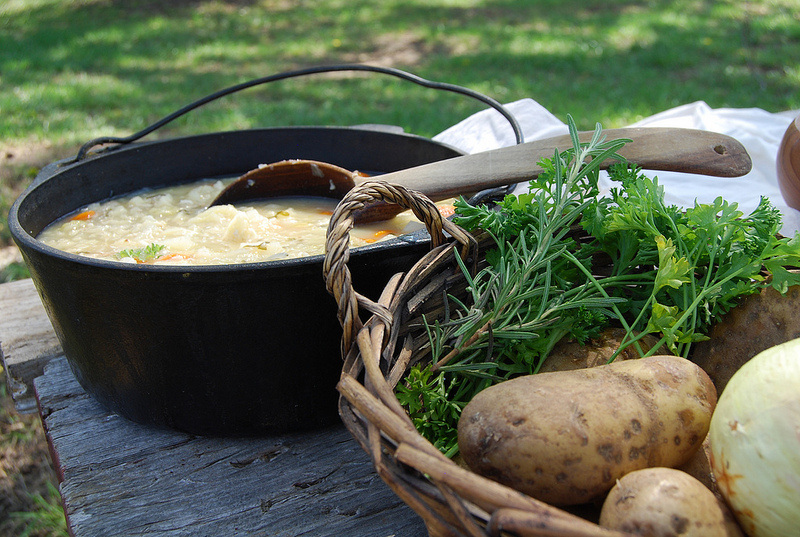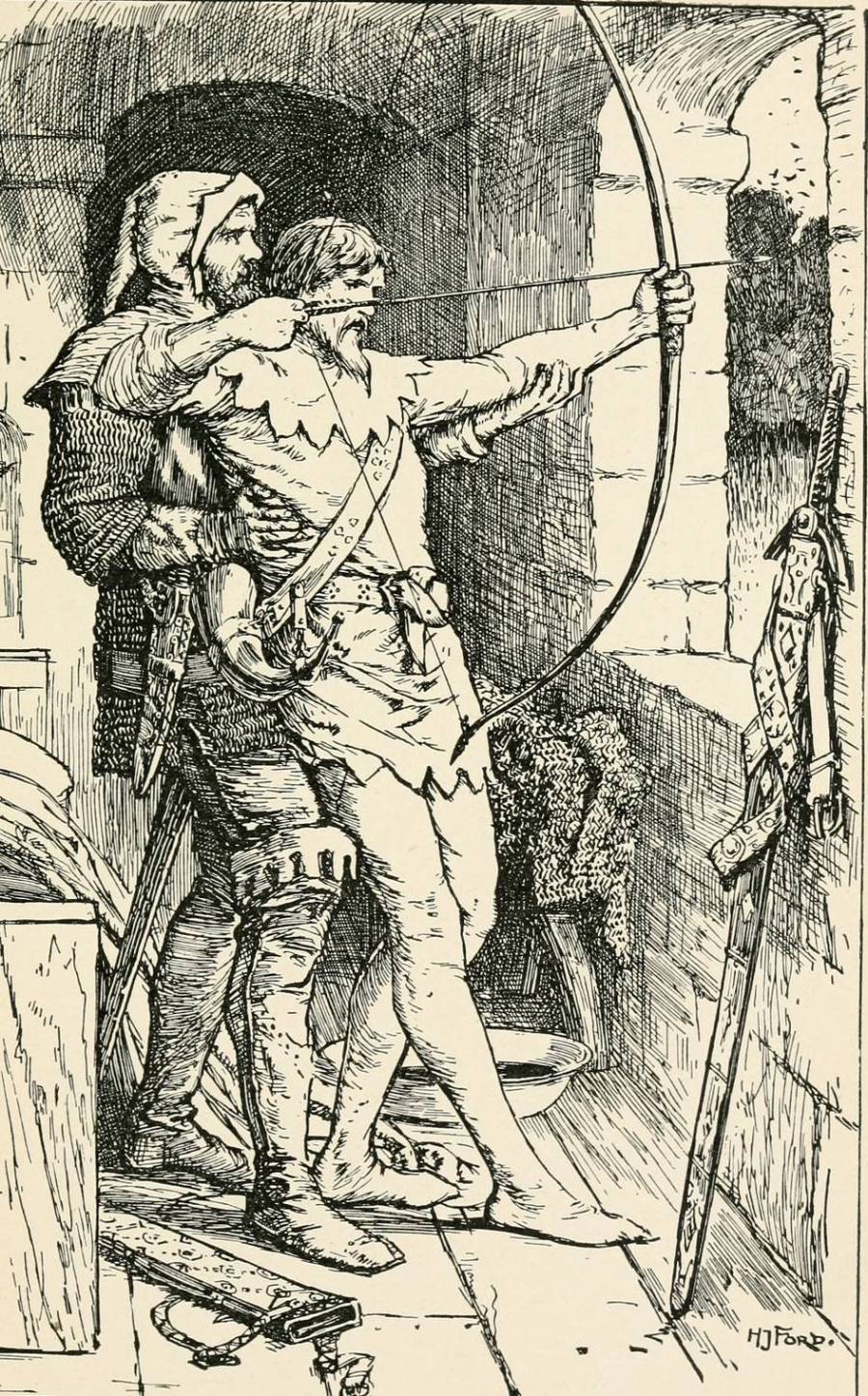To say I wasn’t the happiest bunny in the warren last week, is perhaps an understatement….
Living in the ‘sticks’, we have no mains gas and so rely on an LPG tank. This works just fine – until someone forgets to check the levels and the gas runs out…. I am a miserable moo at the best of times during the winter months, I detest the cold – to have no heating or hot water equals a total disaster for me. So, when total disaster struck last week, I was not happy at all and I let everybody know about it! Eventually, a certain member of the household snapped back at me – “For goodness sake! It’s only been a couple of days, imagine what it used to be like….”
This got me thinking…. If this house could talk, what would it have said to me? I’m certain something like – “You lightweight wimp! I could tell you a tale or two….”
Now, I can only try to imagine what it must have been like for the first occupants of this house….pretty grim I should think. I looked around my kitchen and attempted to visualise what it would have looked like some 650 years ago….
The ‘cooker’ doubling up as the ‘central heating system’ would have been an open fire in the middle of the floor – fireplaces with chimneys hadn’t been invented yet. The place would have been thick with wood smoke, most of it being drawn up into the rafters to eventually find its way out but still permeating into everything. Having no windows as such (draughts had to be kept at bay and glass was a rare, expensive commodity), meant it would have been very dark….


Rush lights, a simple form of lighting, would have been readily available. Wild rushes were gathered and then dried, enabling the skin to be stripped off to reveal a firm inner pith, which would be soaked in animal fat. This produced a ‘torch’ that could be fixed to the beams to provide light. They did not last for long and needed a watchful eye to prevent nasty accidents from happening. If I look closely at some of the beams in here, I can see evidence of scorch marks where rush lights had been left to burn too low…. If a household was wealthy enough, tallow candles may have been used instead….
Scorch marks on the beams in the kitchen of No.3, caused by rush lights being allowed to burn too low….
Cooking was probably a fairly simple affair. Meat was a rarity; if it was available, it was most likely to be pork. Rabbits would have been plentiful for the lucky ones, who were granted permission to catch them, by the Lord of the Manor. If the family owned a pig, it was normal to slaughter it at the beginning of Winter, to provide for the coming months and because it was impractical to feed such livestock over this period….
Generally, the family’s daily diet consisted of one main meal per day ; coarse barley bread and ‘pottage’ – a type of stew made from grain and vegetables (that had been grown in the vegetable patch)….

Modern day example of ‘pottage’ – post Sir Walter Raleigh !!

Nuts would have been gathered in the Autumn. As would acorns, to fatten the pig. Cheese would have been made from goats milk (or cow if the family was wealthy enough to have one). Chickens scratched around the yard, providing a supply of eggs, perhaps they would have been accompanied by the odd goose. It is highly likely sheep would have been kept, for their wool…. The most prized beast to own would have been an ox – to help work the land….

Animals were highly valuable; this is why, so often, they were kept in the house overnight….

Bears and wolves still roamed the English countryside in those days, as well as the occasional chancing ‘rustler’. Keeping the animals at such close quarters brought its problems, a part from the obvious of not being house trained, (which in its turn attracted flies), there were the fleas; the house would have been a haven for all kinds of creepy crawlies….and vermin! Rats and mice would have been in abundance….
I am often to be heard complaining about mud on the floor – (my lot aren’t very well house trained either) – but back in the day, these floors would have been made of mud, with straw strewn across them…. Contrary to belief, people in Mediaeval times did attempt to keep their homes relatively clean – the straw was periodically swept out and replaced….
They also made an effort to keep themselves clean, although bathing would have been a warmer weather activity, when rivers and streams could be used…. Clothes would have been changed and washed on a fairly frequent basis. Of course, there was no running water – that had to be brought in daily – the ‘loo’ would have been a bucket, that needed emptying every day into a nearby stream….
Most likely, the first occupants of this house were a yeoman and his family. A yeoman had a slightly higher standing than a foot soldier but lower than a knight or nobility. He would have owned and worked land but at the same time served his Lord. He would have been trained to use the bow and quite possibly a sword and dagger, he would have taken part in fighting on behalf of his Lord….

His home would have been more substantial than that of a peasant or ‘serf’ – its size depending on his wealth. This particular one probably belonged to a fairly modest yeoman but was well constructed for its time. Furniture would have been sparse – benches and stools (as opposed to chairs), with a wooden table and a chest in which to keep clothes and valuables. Possibly, a simple bed or two but more likely, straw matresses on the floor. Various hooks would have been situated around the place from which possessions and provisions were hung…. The whole family and any servants they had (if affluent enough), probably all lived together in one room….

The lady of the house had many tasks to attend to on a daily basis, possibly with a servant to help; although, in a house of this size, that is unlikely to have been the case…. Keeping the house clean (as best she could) and making rush lights were part of the day to day routine. She would have been responsible for feeding the family, making the pottage, cheese, bread etc : Milking the cow or goats, collecting eggs, feeding the animals, tending the vegetable plot….




The sheep needed shearing, the wool washing and carding. Then it was her job to spin it and quite possibly weave the resulting yarn to make cloth, from which she made clothing for the family. Breeches and tunics for the men; an ankle length gown or two for herself. She also wore a surcoat (a type of over dress), a smock, maybe a cape and being married, a wimple (a drape covering the head, tucking around the neck and chin)….


Her spinning usually accompanied her where ever she went, so as to fill in any ‘spare’ moments she may have had….



She was also in charge of all the laundry and any mending or patching that needed doing….
Being a yeoman’s wife, her clothing would have been of better quality than that of a peasant. The family probably would have had enough money to be able to buy linen and dyes to colour the wool. Greens and blues were favoured (reds and purples being kept for the upper classes and royalty). Wearing yellow was discouraged, as this was the colour worn by women of ill repute! Certain fabrics, such as silk were not allowed, as these were reserved for the higher classes….
She would, almost certainly, have had several children to look after. Education was extremely rare, so generally children would have been set to work as soon as they were old enough….
As if she didn’t have enough to do already, the housewife would have been expected to help her husband on the land; sowing, reaping, threshing, even ploughing….
A typical yearly calendar for a yeoman would entail :
January/February : Plough and harrow the land. Spread manure. Plant trees and hedges. Prune fruit trees.
March/April : Sow wheat, rye, oats and barley. Scour the ditches and maintain coppices.
May : More of the same. Wean the lambs.
June : Wash and shear the sheep. Manure the fields ready for summer ploughing.

July : Make hay. Get wood in ready for Winter.
August : Harvest, probably using hired help.
September/October : Sow rye, then wheat. Make cider. Prune hedges and trees. Plant rose bushes. Attend local fairs selling produce, buying and bartering for required provisions.
November : Slaughter animals. Put straw out to rot, ready for next years manure. Bring in any animals intended to overwinter. Cover asparagus and strawberry beds.

December : Plough land ready for beans. Gather fuel.
Then at the end of the year, a few days would have been taken off (just tending to absolutely necessary tasks, such as the animals), to feast and celebrate Christmas. Then the cycle would begin all over again, bearing in mind life expectancy was just mid forties, that was if they were lucky….

There is no denying, life was tough….full of hardship, pain and discomfort….
Next time the gas runs out, or we experience a power cut….I shall remember all this before I open my mouth to complain….I have learnt my lesson….



Great post, Hazel! Lots of good detail, and I like the pictures (though you might want to remove the potato from the basket, given the period you’re describing – haha!). Anyway, I write historical fiction set in the 14th century, and I strive to imagine what it must have been like living then, especially for peasant women. I have a “thing” about drying clothes… I doubt peasants had many sets of clothes, and it must have been soooo hard to dry them out after a downpour, with only a central hearth, and I have thought that they must often have had to put clothes back on still damp… How very grim! In one of my own blogs, I also write about how busy medieval women must have been, with so many tasks to occupy them… However busy we 21st century “multi-tasking” women think we are, I do still feel we have it relatively easy, compared to our 14th century sisters!
LikeLiked by 1 person
Thank you so much, Carolyn. This is all new to me and I am very much still ‘finding my feet’….
Arghh!! The spud – I should of thought of that – thanks, I have put a foot note on….
I am waiting for my copy of Fortune’s Wheel to arrive, I am really looking forward to reading it…
I often think to myself, if there are any ghosts in this place they would be completely bemused by our lifestyle today….
LikeLike
I’m a newbie too, Hazel – am only just getting the hang of all aspects of social media! I must admit it’s lovely to connect with people who have the same obsessions as you – such as how medieval peasants lived… Wouldn’t it be fabulous to show your “ghosts” a tumble dryer (for example) – they’d be gobsmacked! I’m thrilled you’ve bought my book and do hope you enjoy it!
LikeLike
That could explain why two washer/driers have ‘blown up’ since living in this place – quite possibly the “ghosts” had them exorcised….
My copy of your book arrived today – having read the prologue, I fear not a lot is going to get done in this place over the next few days….
LikeLike